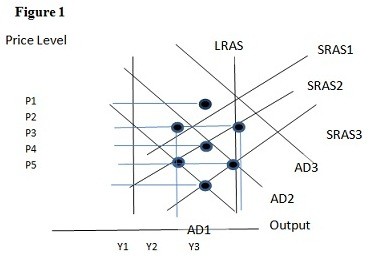Using Figure 1 above, if the aggregate demand curve shifts from AD2 to AD3 the result in the short run would be:
A. P1 and Y2.
B. P2 and Y3.
C. P3 and Y1.
D. P2 and Y2.
Answer: B
You might also like to view...
Suppose the quantity of money is greater than the quantity of money demanded. In the short run, what occurs to set the quantity of money equal to the quantity of money demanded?
What will be an ideal response?
Cost-price pricing typically does not result in profit-maximization. As a result, economists have two views of cost-plus pricing. One of these views is
A) cost-plus pricing is a good way to approximate the profit-maximizing price when marginal revenue or marginal cost is difficult to determine. B) cost-plus pricing is more likely to lead to profit-maximization for monopolistically competitive firms than for oligopoly firms. C) cost-plus pricing is more likely to result in profit-maximization the more elastic the firm's demand curve is. D) cost-plus pricing is more likely to lead to profit-maximization for large firms than for small firms.
When the British pound rises in value relative to other currencies, then
A) goods imported into Britain rise in price. B) British exports rise in price. C) neither British exports nor imports rise in price. D) both British exports and imports rise in price.
A constitutional amendment requiring the federal government to balance its budget annually would
a. require a decrease in taxes and/or an increase in government spending during an economic expansion. b. require an increase in taxes and/or a decrease in government spending during a recession. c. destabilize the economy. d. All of the above.